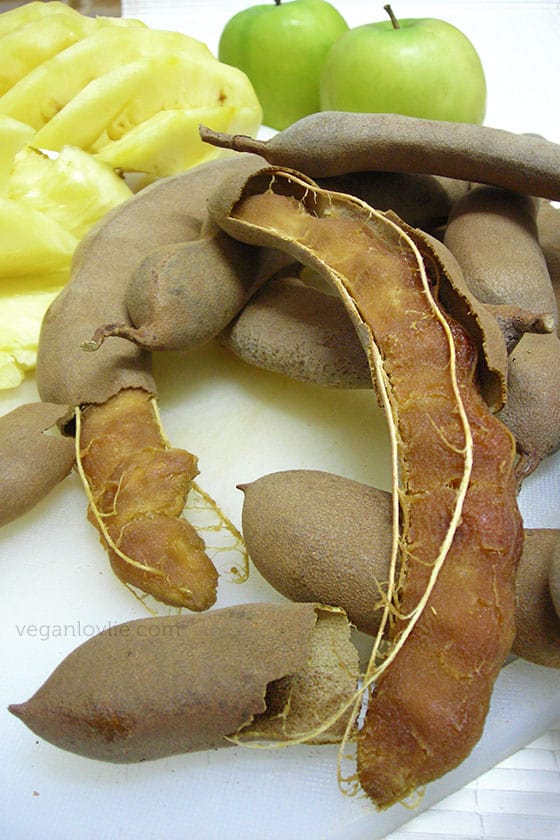Tamarind pulp is a common ingredient in many Mauritian dishes ranging from chutneys to curries without forgetting drinks, desserts and popsicles! I have featured a few recipes in the past but I have never quite explained how to extract the pulp from the seeds.
I have a few recipes coming up soon with tamarind as ingredient and I realise that it may be helpful to actually demonstrate how to prepare the tamarind pulp before it can be used in recipes. If you are not familiar with tamarind, it is a fruit that comes in a long shape with a shell. The pulp and seeds are found inside the shell. The taste ranges from very sour to sweet. The sour variety is more common.

This is actually an old photo that I could dig up from my vintage repertoire of photos I took when I was blogging from Mauritius back in 2008!
But tamarind cannot always be found fresh and they are more conveniently available in the form of a compressed block in many Asian stores. Depending on brand, the varieties range from soft to a very dry and hard pulp. Most come with the seeds. Sometimes I leave the seeds in depending on the recipe but most of the time the seeds need to be removed.
The process is nothing complicated:
Tear a piece of tamarind paste from the block. Place it in a bowl and cover with some lukewarm water. The amount of water depends on how thick you need the pulp to be. This depends on recipes. For chutneys and sauces you may want a thicker consistency, for beverages a watery consistency will do. If the pulp is soft, you may go in right away and start to smoosh the pulp between your fingers. Else leave it to soak for about 15 minutes.
Keep smooshing until all pulp is dissolved in the water. Then scoop out the seeds with your fingers and squeeze them in your hand to drain out all the liquid. You may also use a strainer to sieve out all the seeds. But since you’ve already got your fingers in the pulp, it is easier to just remove the seeds from the pulp in this way — less dishes to wash up afterward is always a good thing!
Now you can use the pulp in recipes that call for tamarind. This pulp keeps well in the fridge for a few days if you have leftovers.
Here’s the video demo and stay tuned for upcoming recipes.



Once in awhile, I'll see the fresh tamarind at the store but I didn't know what I would do with it. Thanks for the awesome primer! 🙂
With the fresh one, I more often make compotes and drinks. When I was a kid I use to eat this out of the shell. Wooah, I don't know if I could do this now.
When I was visiting Thailand, I always go for tamarind and fresh tamarind when it comes to ordering food, but I’ve never worked with fresh tamarind pulp. I usually have tamarind paste at home for cocktails and Asian dishes. Thanks for sharing this tutortial!